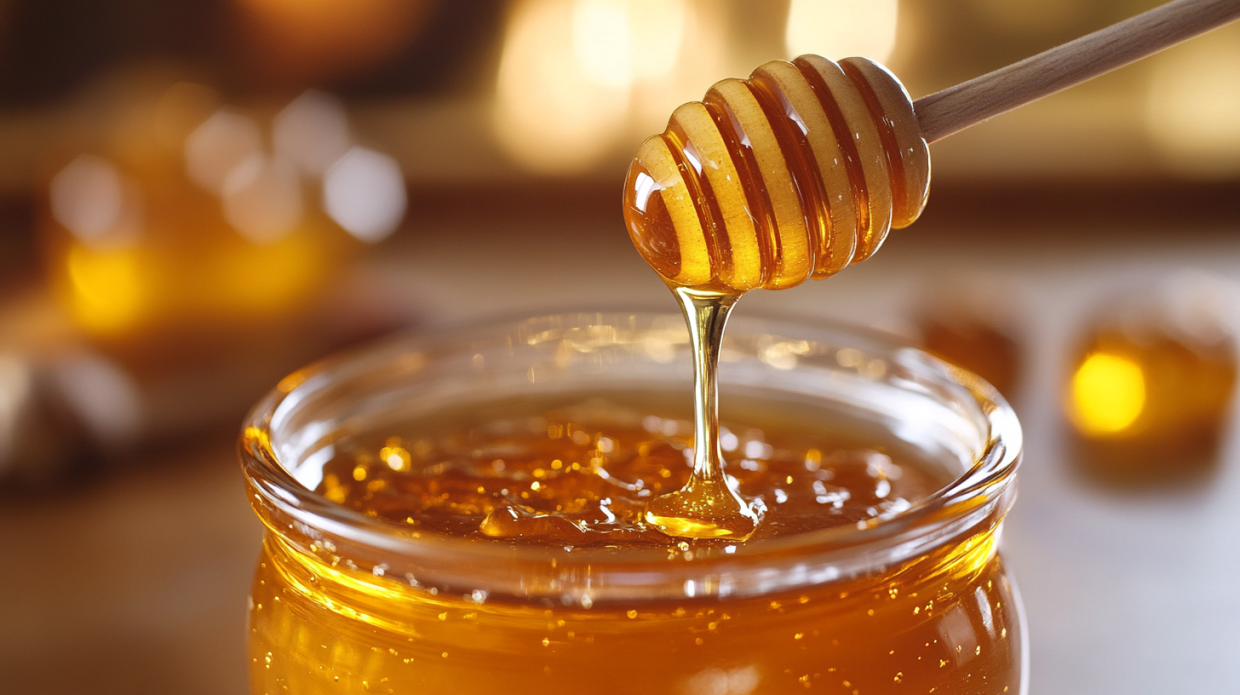
Kirkland Signature Organic Whole Milk, 8 fl oz, 18-count
- Whole Milk
- 8 fl oz Cartons
- 18 Total Cartons
- Vitamin D
- USDA Organic
Why This Costco Staple Deserves a Spot in Your Fridge
In the vast landscape of dairy options, few products combine quality, value, and versatility quite like Kirkland Signature milk. As a Costco member for over a decade, I’ve witnessed firsthand how this humble staple has evolved to meet changing consumer demands while maintaining the affordability that makes Costco famous. Whether you’re a milk enthusiast or simply curious about what makes Kirkland’s dairy offerings special, this comprehensive guide will pour out everything you need to know.
The Kirkland Milk Experience
Walking through Costco’s refrigerated section, you’ll inevitably pass the distinctive Kirkland Signature milk jugs. They sit there, unassuming yet reliable, often overlooked in our rush to grab more exciting purchases. But these containers hold more than just milk—they represent Costco’s commitment to delivering quality products at unbeatable prices.
My family goes through approximately two gallons of milk weekly. After years of brand-hopping, we settled on Kirkland milk as our go-to choice, impressed by its consistent taste and value. But is it truly superior to other options on the market? Let’s dive deeper.
Kirkland Milk Varieties: Something for Everyone
Costco understands that dairy preferences vary widely among consumers. Their Kirkland Signature line reflects this diversity with several options to suit different dietary needs and taste preferences.
Traditional Dairy Options
The cornerstone of Kirkland’s milk lineup includes:
- Whole Milk (3.25% milkfat): Rich and creamy, perfect for coffee enthusiasts and bakers
- 2% Reduced Fat Milk: The popular middle-ground option balancing creaminess and lower fat content
- 1% Low-Fat Milk: For those seeking a lighter option while retaining some creaminess
- Fat-Free (Skim) Milk: The leanest option with virtually no fat
Each variety comes in generous gallon containers, typically sold in two-packs at most warehouse locations. The packaging is straightforward—clear plastic jugs that allow you to see the product inside, topped with color-coded caps (red for whole, blue for 2%, etc.) following industry-standard conventions.
Specialty Options
Beyond traditional milk, Kirkland has expanded into specialty categories:
- Organic Milk: Available in whole and 2% varieties, certified USDA organic
- Lactose-Free Milk: Offered in 2% fat content, perfect for those with lactose intolerance
- Ultra-Filtered Milk: A newer addition with higher protein and lower sugar content
While not every Costco location carries all varieties, most warehouses stock at least the conventional and organic options, with specialty products appearing in markets where demand is higher.
The Price Factor: Unbeatable Value
Perhaps the most compelling reason to choose Kirkland milk is the cost savings. As of mid-2025, Kirkland Signature conventional milk typically sells for around $2.75-$3.50 per gallon, with regional variations. When purchased in the standard two-pack configuration, this translates to approximately $5.50-$7.00 for two gallons—a substantial savings compared to national brands at traditional grocery stores.
The organic options command a premium, typically priced around $9.99-$11.99 for two half-gallon containers, but still represent significant savings compared to other organic brands which can exceed $7 per half-gallon at conventional retailers.
The value proposition becomes even more apparent when you consider the quality you’re receiving for this price point. Unlike some budget milk brands that compromise on taste or ethical production standards, Kirkland milk maintains high quality while keeping costs low through Costco’s efficient supply chain and bulk purchasing power.
Nutritional Profile: What’s Really in That Jug?
Kirkland milk’s nutritional content aligns closely with industry standards across fat content varieties. For reference, a one-cup (240ml) serving of Kirkland 2% milk typically contains:
- Calories: 120
- Total Fat: 5g
- Saturated Fat: 3g
- Cholesterol: 20mg
- Sodium: 125mg
- Total Carbohydrates: 12g
- Sugars: 12g (naturally occurring lactose)
- Protein: 8g
- Calcium: 30% DV
- Vitamin D: 25% DV
- Vitamin A: 10% DV
Kirkland milk is fortified with Vitamins A and D, as is standard practice in the American dairy industry. The vitamin D addition is particularly valuable since it helps with calcium absorption—crucial for bone health.
The organic varieties offer identical macronutrient profiles to their conventional counterparts, with the primary difference being production methods rather than nutritional content.
Sourcing and Production: Local Connections
One fascinating aspect of Kirkland milk is its sourcing strategy. Rather than operating national production facilities, Costco partners with regional dairy processors across the country. This means your Kirkland milk likely comes from cows within a few hundred miles of your local warehouse, supporting regional agriculture while reducing transportation costs and environmental impact.
This regional approach explains why Kirkland milk can vary slightly in taste and appearance depending on your location. The milk you purchase in Seattle might come from a different dairy cooperative than the milk sold in Miami or Chicago.
For conventional Kirkland milk, the company doesn’t make specific claims about hormone use. However, their organic options adhere to USDA organic standards, which prohibit the use of synthetic hormones like rBST or rBGH. The organic varieties also come from cows fed organic feed and given access to pasture during grazing season.
Shelf Life and Storage: Maximizing Freshness
Kirkland milk typically features a “sell by” date approximately 14-21 days from packaging, comparable to other pasteurized milk products. Once opened, you should consume the milk within 5-7 days for optimal freshness, regardless of the printed date.
Unlike ultra-pasteurized options (which undergo higher-temperature processing), regular Kirkland milk requires constant refrigeration. Store it at 40°F (4°C) or below, and avoid keeping it in the refrigerator door where temperatures fluctuate most.
An interesting quality hack: placing your milk jugs toward the back of your refrigerator rather than in the door can extend freshness by several days by maintaining more consistent temperatures.
The Taste Test: How Does It Compare?
Flavor remains subjective, but Kirkland milk generally receives positive reviews for its clean, traditional dairy taste. The whole milk offers rich creaminess without excessive heaviness, while the reduced-fat options maintain good mouthfeel despite lower fat content.
In blind taste tests I’ve conducted with friends (yes, I’m that person who makes guests sample milk varieties), Kirkland consistently performs on par with premium national brands while outperforming most store brands. The organic varieties in particular earn praise for their slightly sweeter, fuller flavor profile compared to conventional options.
What’s remarkable is the consistency—despite regional sourcing differences, Costco maintains tight quality control standards that ensure your Kirkland milk experience remains reliable regardless of which warehouse you visit.
Environmental Considerations: Packaging and Sustainability
The standard Kirkland milk packaging consists of high-density polyethylene (HDPE) plastic jugs—the same material used by most milk producers. These containers are recyclable in most municipal programs (typically designated as #2 plastic).
While not the most eco-friendly option compared to cardboard cartons or glass bottles, the plastic jugs offer practical advantages including durability during transport, lighter weight (reducing shipping emissions), and excellent preservation of freshness. The clear jugs also allow consumers to visually inspect the milk before purchase.
For environmentally conscious shoppers, the organic options sometimes come in paperboard cartons with plastic screw caps, offering a somewhat reduced plastic footprint. However, these cartons contain polyethylene layers that make them more difficult to recycle in some regions.
Beyond Drinking: Culinary Applications
Kirkland milk’s consistent quality makes it versatile for culinary uses beyond direct consumption. The whole milk version performs exceptionally well in baking applications, creating tender cakes and moist breads. Its rich fat content also makes excellent homemade yogurt, creamy puddings, and velvety sauces.
The 2% variety strikes a good balance for everyday cooking needs, from mashed potatoes to cream soups. Even the skim option works well for lighter preparations where fat content isn’t crucial to texture.
I’ve found that the organic varieties, with their slightly different flavor profile, add subtle complexity to dishes where milk is a prominent ingredient, such as bechamel sauce or homemade ice cream bases.
Special Dietary Considerations
Lactose Intolerance
For those with lactose sensitivity, Kirkland’s lactose-free 2% milk offers a solution. This product contains added lactase enzyme that breaks down lactose into more digestible sugars. The taste remains nearly identical to regular 2% milk, with perhaps a slightly sweeter note due to the converted lactose.
Children and Infants
While Kirkland milk is suitable for children over one year of age, it’s not appropriate for infants under 12 months, who should receive breast milk or formula exclusively. For toddlers transitioning from formula, pediatricians typically recommend whole milk for proper brain development and growth, making Kirkland’s whole milk a cost-effective option for young families.
Allergies and Sensitivities
Those with milk protein allergies should avoid all Kirkland dairy milk varieties. Unfortunately, as of 2025, Costco has not yet introduced plant-based milk alternatives under the Kirkland Signature brand, though they do carry various name-brand alternatives like almond, soy, and oat milk.
The Costco Experience: Purchasing and Return Policy
Buying milk at Costco differs from typical grocery shopping. The two-gallon packaging means you’ll need adequate refrigerator space and sufficient consumption to use it before spoilage. For smaller households, this can present a challenge.
However, Costco’s legendary return policy applies even to perishables like milk. If you find your Kirkland milk unsatisfactory for any reason—off taste, premature spoilage, or simply not meeting expectations—you can return it for a full refund, even after opening. This satisfaction guarantee removes much of the risk from purchasing in bulk.
Online Availability
While most groceries require warehouse visits, Costco has expanded its delivery options. In many markets, Kirkland milk is available through Costco’s same-day delivery service (often fulfilled via Instacart). However, pricing typically includes a premium over in-warehouse purchases, and availability can be limited for perishable items.
Consumer Reviews and Reputation
Online reviews for Kirkland milk are predominantly positive, with the product maintaining an average rating of approximately 4.6/5 stars across various review platforms. Consumers consistently praise:
- Value for money
- Consistent quality
- Good taste compared to other brands
- Long shelf life before opening
The most common criticisms involve:
- Occasional inconsistency in taste (likely due to regional sourcing differences)
- Packaging size being too large for smaller households
- Limited availability of specialty options in some regions
Comparison to Competitors
When comparing Kirkland milk to competitors, several factors come into play:
National Brands (Dairy Pure, Horizon, etc.)
- Kirkland typically costs 20-30% less
- Quality differences are negligible in blind taste tests
- National brands sometimes offer more specialty varieties
Other Store Brands (Great Value, Simple Truth, etc.)
- Kirkland generally offers superior quality at similar price points
- Costco’s quality control appears more consistent
- Other store brands may be more accessible without membership requirements
Premium/Local Brands
- Local dairies may offer superior freshness and taste but at 50-100% higher prices
- Premium brands sometimes use higher-quality packaging (glass bottles)
- Local options may have stronger sustainability credentials and more transparent sourcing
The Future of Kirkland Milk
Costco continues to evolve its Kirkland Signature line to meet changing consumer preferences. Industry insiders suggest several potential developments on the horizon:
- Expanded plant-based alternatives under the Kirkland brand
- Ultra-filtered versions with higher protein content
- Enhanced sustainability initiatives in packaging
- More transparent sourcing information
As dairy consumption patterns shift, Costco appears committed to maintaining Kirkland milk as a cornerstone product while adapting to market trends.
Is Kirkland Milk Right for You?
The decision to purchase Kirkland milk ultimately depends on your household needs, consumption patterns, and values. It represents an excellent choice if:
- You have a family that consumes milk regularly
- You prioritize value without sacrificing quality
- You have adequate refrigerator space for bulk purchases
- You already maintain a Costco membership
However, it might not be ideal if:
- You live alone and consume minimal dairy
- You strongly prefer specialized varieties not offered in the Kirkland line
- You don’t have a Costco membership or warehouse nearby
- You prioritize packaging sustainability above other factors
Conclusion: The Unsung Hero of Your Costco Run
In a shopping landscape where flashier products often steal the spotlight, Kirkland Signature milk quietly delivers exceptional value day after day. Its combination of quality, affordability, and regional sourcing makes it one of the smartest regular purchases a Costco member can make.
Whether you’re pouring it over cereal, incorporating it into your favorite recipes, or simply enjoying a refreshing glass, Kirkland milk represents Costco’s philosophy in liquid form—eliminating unnecessary costs while maintaining the quality standards consumers deserve.
The next time you push your oversized cart through Costco’s dairy section, take a moment to appreciate this unassuming product. Behind those simple plastic jugs lies a thoughtful approach to sourcing, production, and distribution that delivers consistent quality at prices that keep families coming back for more.
In the world of dairy, Kirkland milk proves that sometimes the basics, when done right, can be extraordinary.




